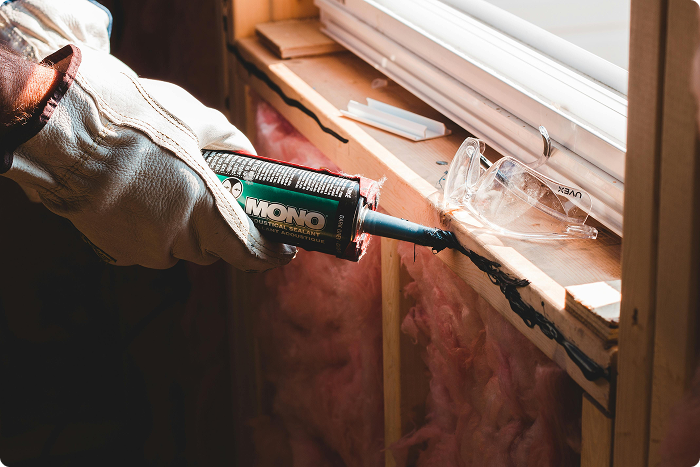Effective Pest Prevention & Maintenance: Home Pest Prevention, Sealing Entry Points, Seasonal Pest Control, and Pest-Proofing Techniques
By Jose Donnelly · Jul 25, 2025

A pest-free home is a happy home. Effectively preventing and managing pests is crucial for maintaining the structural integrity of your property and ensuring the health and well-being of your family. Pest prevention and maintenance require a multi-faceted approach involving home pest prevention, sealing entry points, seasonal pest control, and implementing robust pest-proofing techniques. This article will provide comprehensive insights into these strategies, ensuring your home remains a safe and comfortable haven year-round.
Understanding the Importance of Pest Prevention & Maintenance
Why Home Pest Prevention Matters
Preventing pests from entering your home is the first line of defense against potential infestations. The benefits of effective pest prevention include:
- Health Protection: Pests like rodents, cockroaches, and mosquitoes can carry and transmit diseases.
- Property Preservation: Termites, ants, and other pests can cause significant structural damage.
- Cost Savings: Preventative measures are often less expensive than dealing with a full-blown infestation.
- Peace of Mind: A pest-free home reduces stress and improves the quality of your living environment.
Common Household Pests
Understanding the pests commonly found in homes can help in implementing effective preventative measures. Some of the usual suspects include:
- Rodents: Mice and rats.
- Insects: Termites, ants, cockroaches, flies, and mosquitoes.
- Arachnids: Spiders.
- Wildlife: Raccoons, squirrels, and bats.
Home Pest Prevention Strategies
Sealing Entry Points
One of the most effective ways to prevent pests is by sealing entry points. Pests often find their way indoors through small cracks and gaps in the structure of your home.
Identifying Entry Points
- Doors and Windows: Check for gaps, and use weather stripping and door sweeps.
- Utility Lines and Pipes: Seal gaps around pipes, cables, and wires.
- Foundation and Walls: Look for cracks and holes in the foundation and exterior walls.
- Roof and Attic: Ensure that roofing materials are intact and that vents and chimneys have proper screens.
Materials for Sealing
- Caulk: Best for small cracks and gaps around windows, doors, and walls.
- Steel Wool: Ideal for stuffing into holes around pipes and utility lines.
- Expanding Foam: Suitable for larger gaps but must be used carefully to prevent over-sealing.
- Weather Stripping: Essential for sealing gaps around doors and windows.
Seasonal Pest Control
Pest activity can vary significantly with the seasons. Implementing seasonal pest control measures ensures year-round protection.
Spring and Summer
- Mosquito Control: Remove standing water, use repellents, and employ mosquito traps.
- Ant Prevention: Keep kitchens clean, seal food properly, and use baits and barriers.
- Preventing Wasps and Bees: Regularly check for nests and use protective measures to deter nesting.
Fall and Winter
- Rodent Control: Inspect and seal entry points, use traps, and store food securely.
- Spider Control: Keep basements and attics clean and use spider repellents.
- Preventing Overwintering Pests: Ensure that cracks are sealed to prevent pests like stink bugs from entering.
Pest-Proofing Techniques
Effective pest-proofing requires a combination of maintenance, cleanliness, and proactive measures.
Regular Home Maintenance
- Gutter Cleaning: Regularly clean gutters to prevent water buildup and reduce mosquito breeding grounds.
- Landscape Maintenance: Trim bushes and trees away from the house to reduce access for pests.
- Roof Inspection: Inspect the roof and attic for signs of wear and take measures to seal any openings.
Home Cleanliness and Organization
- Proper Food Storage: Store food in airtight containers and regularly clean pantry shelves.
- Waste Management: Ensure that garbage bins have tight-fitting lids and are emptied regularly.
- Decluttering: Reduce clutter in basements, attics, and garages to eliminate potential nesting sites.
Professional Pest Control
- Regular Inspections: Schedule regular professional inspections to detect early signs of infestations.
- Professional Treatments: Use professional pest control services for comprehensive treatments, especially for hard-to-tackle pests like termites and bedbugs.
- Preventative Pest Control: Opt for preventative treatments to deter pests from establishing in the first place.
DIY Pest-Proofing Techniques
Natural Repellents
Many homeowners prefer natural repellents to keep pests at bay.
- Peppermint Oil: Effective against spiders and rodents.
- Vinegar: Useful for cleaning surfaces to deter ants.
- Citrus Peels: Can repel certain insects when placed around entry points.
Homemade Traps and Remedies
Creating homemade traps and remedies can provide relief from common pests.
- DIY Fruit Fly Traps: Using a mixture of apple cider vinegar and dish soap.
- Sticky Traps for Ants: Using honey and borax mixtures on cardboard.
- Physical Barriers: Installing door sweeps and window screens.
Conclusion
Maintaining a pest-free home requires vigilance, regular maintenance, and a combination of preventative strategies. Home pest prevention, sealing entry points, seasonal pest control, and effective pest-proofing techniques are all critical components of a comprehensive pest management plan. By implementing these measures, you can protect your home from damage and health risks associated with pests, ensuring a comfortable and safe living environment.
For additional guidance or to connect with trusted pest control professionals, consider using HouzTask AI. Visit HouzTask AI to ask questions or Find a Pro to connect with experts who can help you maintain a pest-free home.
Need help?
Let HouzTask help you diagnose the issue or connect with a trusted local pro — in minutes.
Get Started with HouzTask